Korean Eating: Pig’s Trotters or Jokbal Is What’s For Dinner
Last Updated on October 17, 2023
Want to have a picnic on the Han River and do it Korean style? There are a few Korean delicacies that often grace a Korean picnic blanket. You might be surprised to find out that braised pig’s feet, or pig’s trotters, called jokbal (족발) is one of them. This rich and savory meal can be picked up in traditional markets or restaurants easily to go and makes for a delicious lunch or dinner treat. Want to learn more about jokbal? Korean pig’s trotters? You’ve come to the right place.
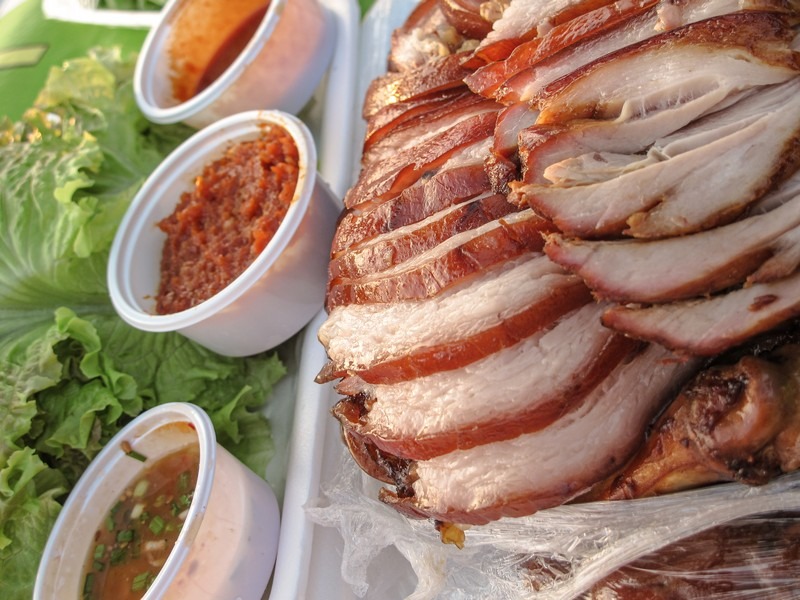
Get ready to eat pigs feet in Korea:
- When to eat jokbal in Korea
- Where to eat pig’s feet in Seoul
- How is Korean pig’s feet made?
- How to eat Korean pig’s trotters
- Are pig’s trotters healthy?
(This post contains affiliate links, which means I receive a certain percentage of a sale if you purchase after clicking at no cost to you. Thank you for your support.)
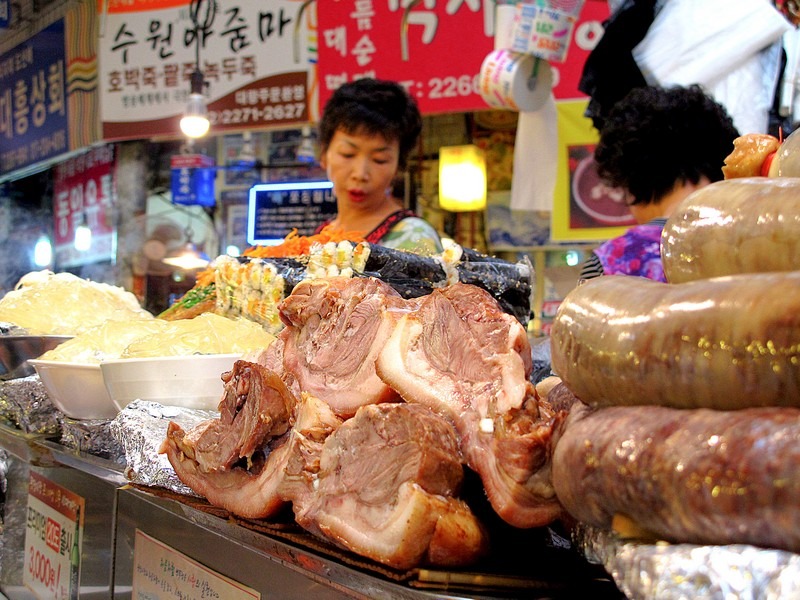
When to eat jokbal in Korea
One reason that jokbal makes for a great picnic meal is because Koreans think of jokbal as drinking food and that’s kind of what picnics in Korea are all about. There are also entire jokbal restaurants that your friends might whisk you into for the second or third round when enjoying a night out Korean style.
Jokbal can also be easily found in markets where you can sit around a stall and eat it together. You can find great jokbal stalls in Gwangjang Market in central Seoul, for example. Jokbal can be enjoyed with soju, beer, or makgeolli which makes it a perfect anju option. Anju (안주) means food consumed with alcohol you see.
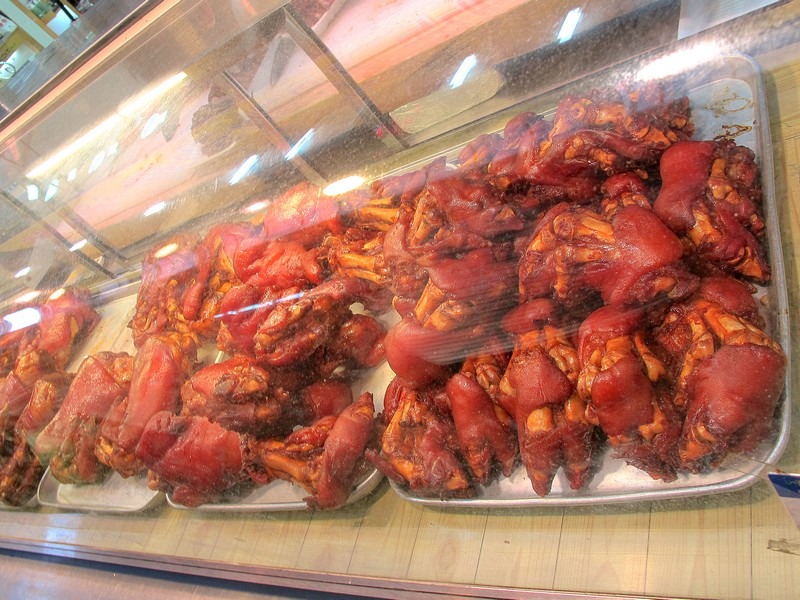
Where to eat pig’s feet in Seoul
Pig’s feet, trotters, or jokbal was a menu item started in Jangchung-dong in the 1960s after being developed by grandmothers from Pyeongan-do and Hwanghae-do. In the 1960s and 1970s, it became a widely consumed delicacy for visitors to Jangchung Gymnasium where professional wrestling matches took place.
Today, you can visit Jokbal Street in Jangchung-dong in the area near Dongguk University Station. There are quite a few restaurants there that claim to be the first jokbal eatery. While we might not know who was the original jokbal creator, we do know many of the restaurants in the area have histories dating back more than 50 years and do whip up some mean pig’s trotters.
FYI, most of the restaurants here have opened up franchises which you can find all over South Korea today.

How is Korean pig’s feet made?
Braised pigs feet, or jokbal (족발), boils away for hours in a stock made of water, sugar, soy sauce, garlic, ginger, rice wine, and maybe a secret ingredient depending on where it’s from. Then, it’s sliced up and served to those eaters looking for something meaty, fatty and extremely mouth watering.
I had seen pigs feet before arriving in Korea, on a drive south from Ohio to Florida and I remember the jar the pigs feet floated in sitting on a shelf in a convenience store vividly. It wasn’t until coming to Korea that I actually gave the trotters a try. Of course the style in which this dish is prepared in countries far apart is different, but now I’d be much more open to trying it back home in the States.
How to eat Korean pig’s trotters
When the skies are blue and the air is warm and it seems like a perfect day for a picnic on the grassy banks of the Han River, consider jokbal as your fare of choice. For our picnics, we tend to head to Mangwon Han River Park so we stop by Mangwon Farmers Market to pick up a helping of pigs feet to savor for dinner. There is a great jokbal stall inside that has been there for my entire time in Korea, aka more than a decade. It’s good, tried, and true.
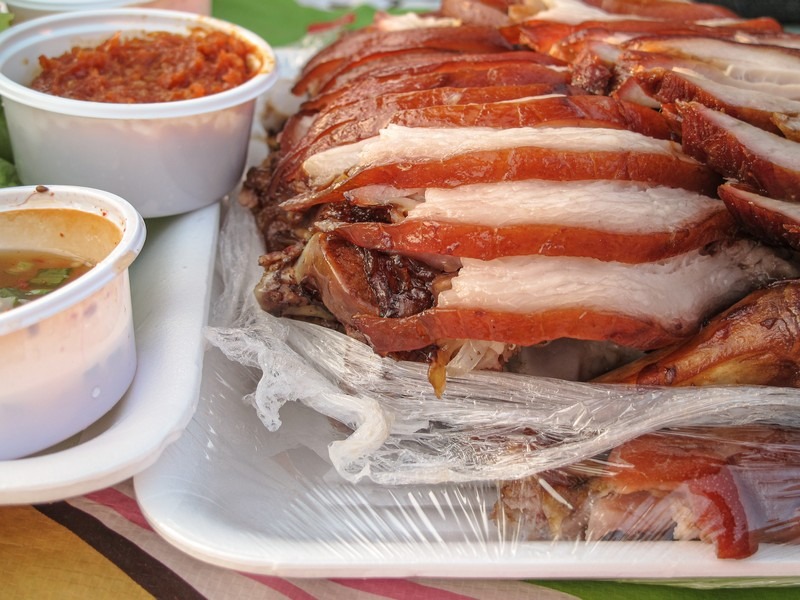
Korean style pigs feet is served with lettuce to wrap them in and three dipping sauces.
- Of the three, the most important sauce is the saeujeot (새우젓) a salty condiment made with tiny fermented shrimp. Saeu means shrimp and jeot stands for any salty fermented condiment used for pickling or as a seasoning. The shrimp are usually salted and fermented for 2 to 3 months before being served up with dishes like pigs feet or bossam.
- Another sauce often served with pigs feet is chojang (초장), a sweet and spicy red chili pepper sauce. This sauce is commonly seen with Korean style sashimi, or hue, and is made by taking gochujang (고추장, red pepper paste), and adding vinegar and sugar.
- The third sauce is the standard ssamjang (쌈장) a spicy red sauce often seen on tables while grilling up delicious cuts of meat. Saamjang is made with gochujang, doenjang (듼장, fermented bean paste), sesame oil, onion, garlic and brown sugar.
Are pig’s trotters healthy?
Koreans often drink soju or beer while enjoying this oily dish, but not to worry, it’s not as unhealthy as you think. I’ve heard it claimed that pigs feet is healthy for the skin and prevents wrinkles as well as prevents hangovers. Jokbal contains a lot of gelatin hence the skin claims and also has the amino acid methionine which can counteract the effects of alcohol. If you believe that, then it’s the perfect dish for a night out, a picnic on the Han or a simple dinner at home and if at all possible round out the meal with a little song and dance to Billie Holiday’s “Gimmie a Pigfoot And A Bottle Of Beer”.
…And at the break of day you can hear ole Hammer say
Gimme a pigfoot and a bottle of beer, send me a gate I don’t care
feel just like I wanna clown.
Give the piano player a drink because he’s bringing me down.
He’s got rhythm yeah, when he stomps his feet.
He sends me right off to sleep.
Check all your razors and all your guns,
We’re gonna be arrested when the wagon comes.
Gimme a pigfoot and a bottle of beer…
Did you like this post? Pin IT!
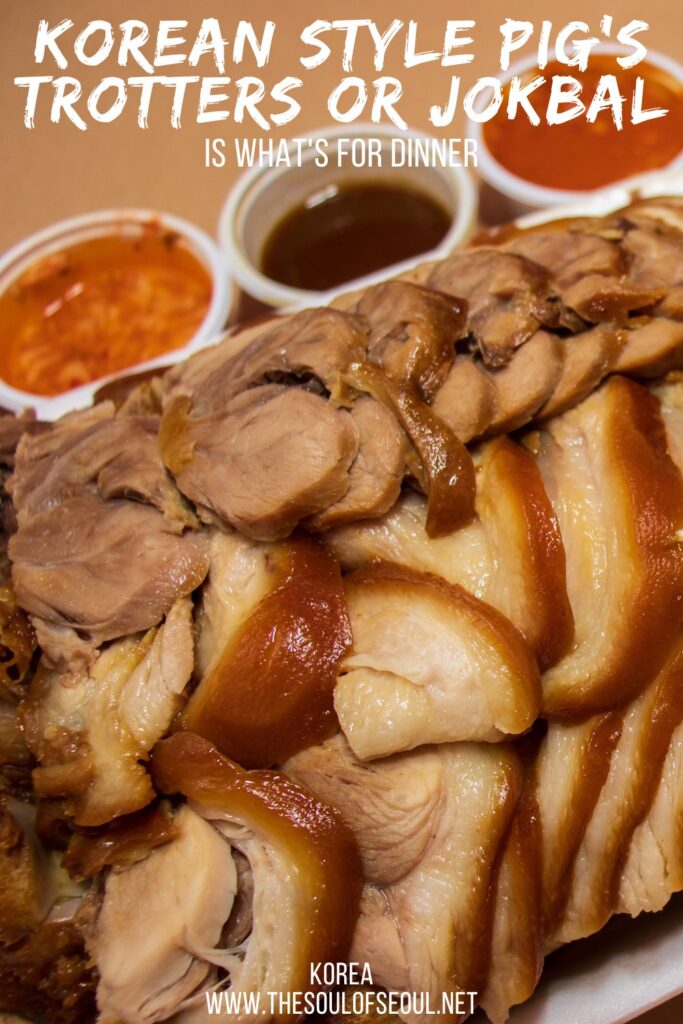
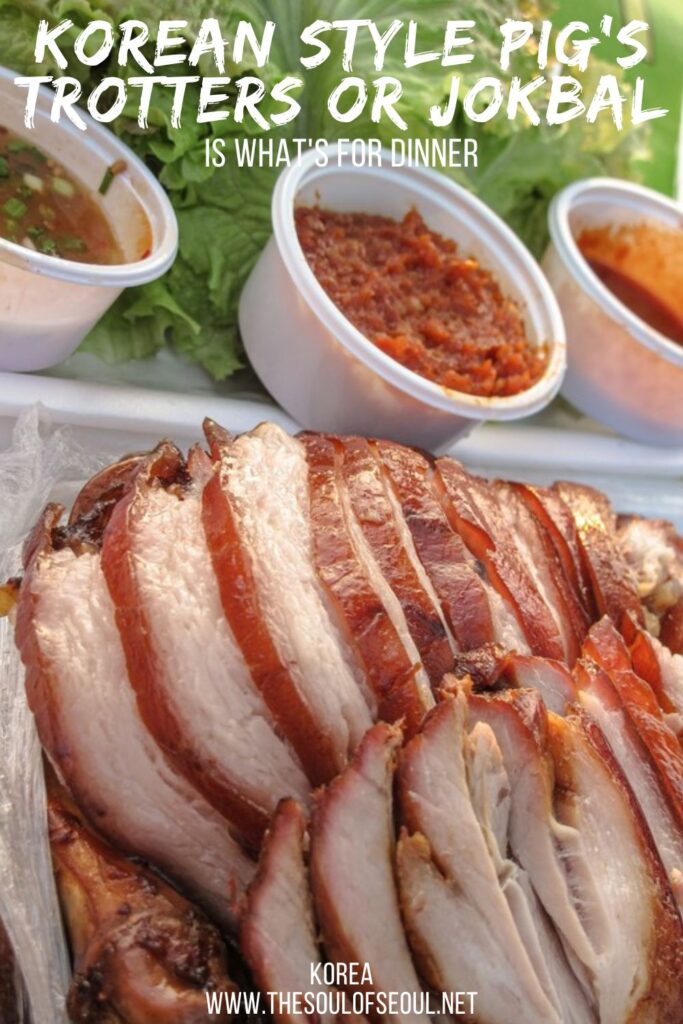
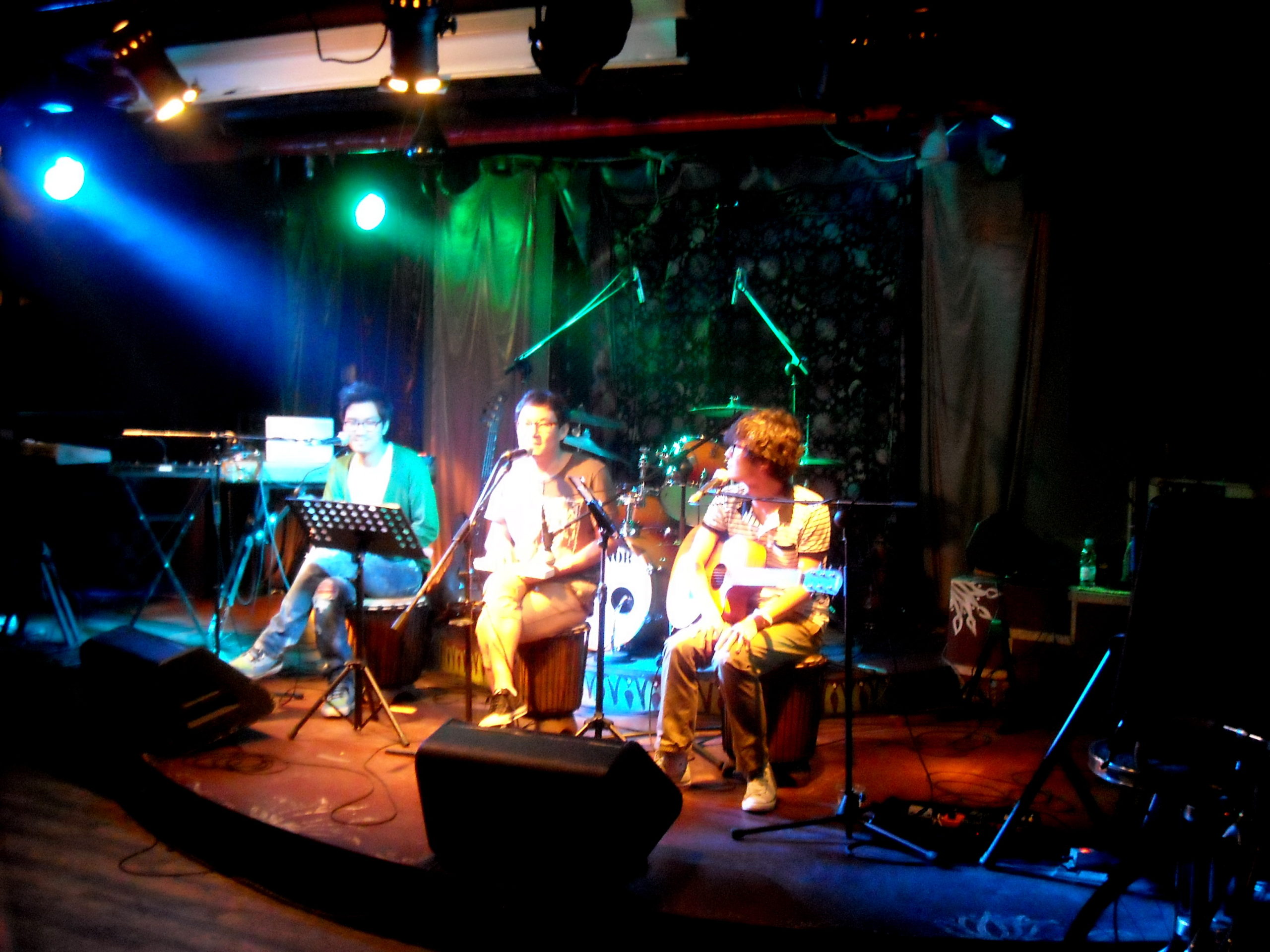
2 Comments
Diana D
The sticky juice of pigs feet is collagen, not oil. They are very healthy as well as delicious.
The Mouse
Awesome, thanks!